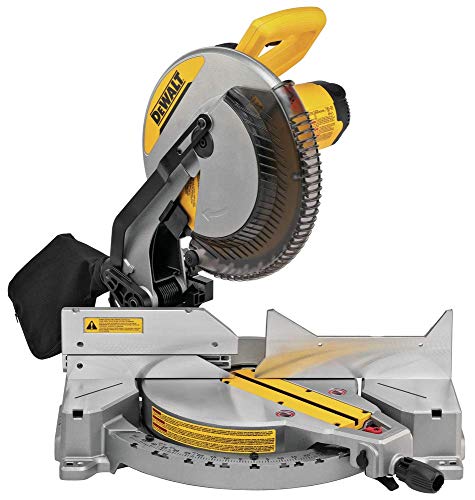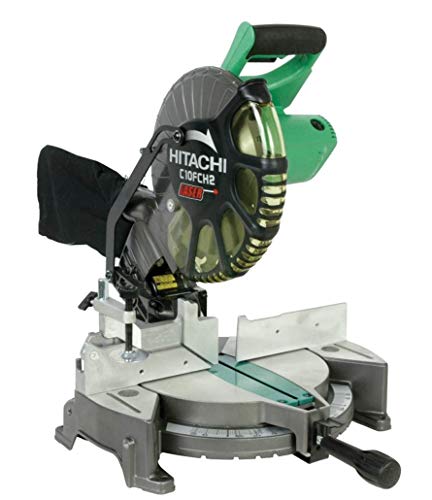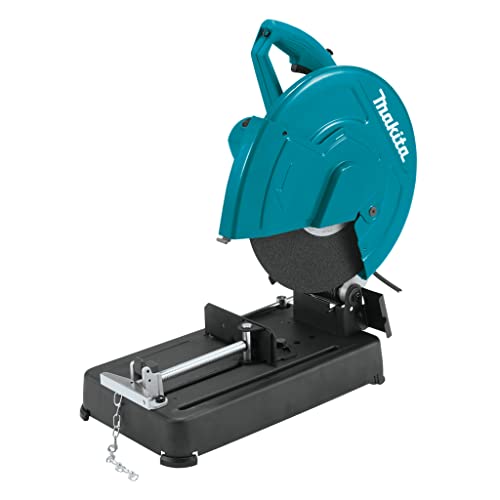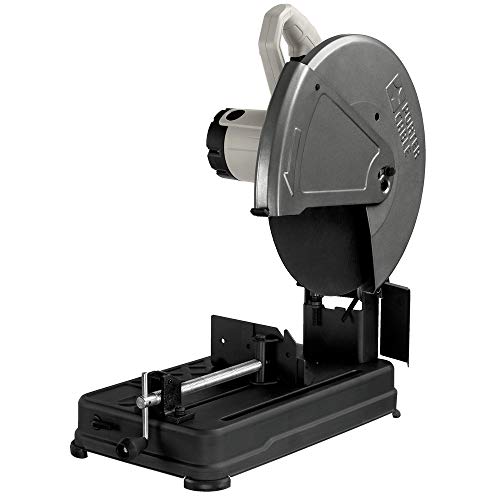Best Chop Saws to Make Neat Angled Cuts
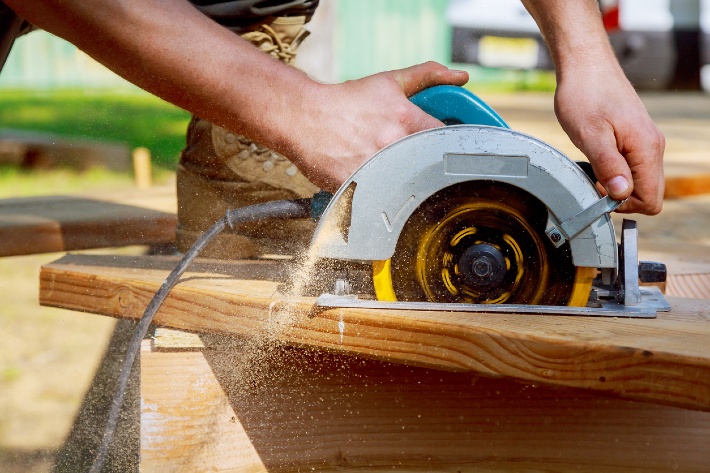
If you’re used to taking care of installations and construction chores on your own, you probably already have a home workshop or at least a set of essential tools for quick fixes and DIY projects. As you take on more involved and detailed projects where you need more precision when cutting wood, plastic, and even steel, one tool that you need in your workshop is a miter saw more commonly known as, a chop saw. If you didn’t know it already, a chop saw has fast-rotating blades that can help you make quick, precise cuts. However, the inarguable utility of a chop saw demands careful hunting when you’re finalizing on your purchase – and we can help you with it. We have put together a list of top-of-the-line, best chop saws in 2024, reviewed them, and listed the pros and cons of each. So, sit tight, read along, and finalize on a chop saw best suits your needs!
Our Top Picks
- Best Overall: DEWALT Chop Saw Shop Now ➔
- Best for Beginners: Hitachi Chop Saw Shop Now ➔
- Best for Thicker Walled Tubing: Makita 14" Chop Saw Shop Now ➔
- Best for Casual Users: PORTER-CABLE Chop Saw Shop Now ➔
Premier Chop Saw in 2024
Best Overall
This chop saw by Dewalt features an unbeatable stainless steel design with a tough build to handle your endless workload, yet light enough to be transported to and from the worksite with ease. Its 15 Amp motor delivers unmatched power and durability. The adjustable stainless steel miter detent plate can be set up easily and has 11 positive stops for accuracy and precision.
Pros
- Lightweight, great for portability
- Comes with a carbide blade and dustbag
- Adjustable cam-lock miter for accuracy
Cons
- It can be slightly challenging to replace the blade
Key Features
Dewalt’s 12-inch compound miter saw is known for its lightweight construction, making it easy to pick up and move around. What’s more impressive is that the DWS715 is durable and well-supported with nicely tall sliding fences for built-in stability. And don’t even get us started on how accurate the cuts are, even when switching angles. There was only one thing that concerned us about this seemingly perfect tool. When trying to replace the blade, it seems the instructions are a bit off as the whole guard assembly needs to be removed for replacement.
Best for Beginners
Hitachi’s compound miter saw employs a laser marker system that gives superior accuracy with each cut. Its 15 Amp motor is durable and powerful to rip through the toughest cuts of wood. It offers wider miter and bevel angles for more accuracy and flexibility. The chop saw has an elastomer grip handle that reduces vibration and gives a more controlled cut.
Pros
- Laser marker for more accurate cuts
- Lightweight and compact
- Elastomer grip handle for comfort and control
Cons
- The instruction booklet isn’t very easy to read
Key Features
This Hitachi makes up for simplicity with pure quality and design. The laser marker can be a lifesaver for precise cuts. Buyers were also pleased with how compact the Hitachi chop saw is. it takes up little space and is light enough to be moved around the workshop. It also has a dust collector attachment that can be connected to a vacuum for a clean, mess-free environment. A slight disappointment was the instruction booklet, which wasn’t very clear on how to put everything together. However, that is only inconvenient at worst and doesn’t interfere with operation.
Best for Thicker Walled Tubing
The Makita LW1401 Cut-Off Saw is a great choice for contractors and DIY-ers alike. It offers a powerful 15 AMP motor that reaches up to 3,800 RPM, ensuring superior performance and durability. An adjustable spark guard is designed to divert sparks away from the operator and keep the workspace safe. The two-stage lock-off power button offers convenience and extra safety when operating the saw.
The fence can be adjusted up to 45º for precise angle cuts, and it adjusts to three locations for various material sizes. A toolless vice adjustment allows users to quickly and easily clamp materials in place. This saw is also equipped with a blade guard for safety, along with a heavy gauge steel base that increases stability.
The Makita LW1401 cut-off saw is an efficient and reliable choice for those who want a professional-level saw without having to break the bank. It is lightweight and easily transported, yet still solidly constructed with quality materials that ensure durability. With this high performing saw there’s no need to go over budget – you can have professional results at an affordable price.
Pros
- Rubber feet behind the blade prevent fire hazard
- Fairly accurate with good power motor
- Well-built with a metal base and steel clamp/miter components
- Tool-less wheel mount and holds the wheel tightly
- Good value for the price
Cons
- Not suitable as a precision tool and accuracy is limited when compared to other chop saws made by different manufacturers and brands
Best for Casual Users
This heavy-duty chop saw is made with a durable steel base, but don’t let its construction fool you because it is lightweight and compact, making it great for portability and storage. It features a quick-release material clamp that holds the workpiece in place as you slice through it as well as a spindle lock for changing the blade more efficiently.
Pros
- Quick-release material clamp to hold workpieces in place
- Spindle lock for changing the blade more efficiently
- Lightweight and compact
Cons
- The blade shield might require occasional tightening
Key Features
The slicing never has to stop with this portable blade, built from sturdy materials with built-in safety features for worry-free cutting and removal. What we liked most about the Porter-Cable was the straightforward setup. It is perfect if you are looking for a chop saw for a good price that can still stand up to a tough workload. It definitely has some power and had no problems cutting through iron, steel, and some other metals surprisingly well. Some slight issues we found were that the spark deflector could have worked a little better, and the blade shield can become loose, though it can be easily tightened.
Best Chop Saws Buying Guide
Whether it’s wood, metal, PVC, or other materials you’re cutting, a chop saw is an absolute necessity. Not to be confused with a miter saw that can rotate and cut at an angle, a chop saw is often used by professionals to quickly make straight cuts in most raw materials.
Are Chop Saws and Miter Saws the Same?
These two saws are often confused with one another, and while they do have a ton of similarities, there are important things that distinguish them from each other as well. Here are some of them.
Size
In general, chop saws are bigger than miter saws. Standard chop saws often use blades that are no smaller than fourteen inches, while miter saw blades range from eight to twelve inches. Because of this, chop saws are often more powerful than miter saws.
Usage
Both chop saws and miter saws are used to cut raw materials like glass, tile, PVC, and more. However, chop saws are used to cut straight, while miter saws are mostly used to create angled cuts. A chop saw is considered more of a power tool, while the miter saw is more often used as a finessing tool.
Application
It’s not uncommon for builders, professional or not, to use different tools and equipment for the different materials they’re using for their projects. Chop saws, for example, are often used to cut larger pieces of materials like metal sheets, PVC pipes, concrete slabs, wood slabs, and more. On the other hand, Miter saws are often reserved for creating detailed cuts on smaller areas like trim and molding.
What Should You Look for When Choosing the Best Chop Saw?
Choosing the best chop saw can be challenging. They’re not exactly cheap, so you’ll want to get something that you won’t regret spending your money on. Here are some things that you need to consider when buying a chop saw:
Blade type
Different materials call for different blades. Most chop saws will either have a diamond abrasive blade or a carbide-tipped blade. Carbide-tipped blades are used mostly for harder materials like stainless steel and other metals. Diamond abrasive blades are more suitable for softer materials like soft alloy metal.
Cutting parameters
If you intend to use your chop saw for minor DIY projects around your home, a lightweight one with a cutting parameter of at least 40mm would be an ideal choice. For heavier projects, you can opt to get one with a cutting parameter that ranges anywhere from 50mm to 65mm cutting parameter instead.
Base elevation
Your chop saw should be comfortable and easy to use, and one of the things that can affect that is the elevation of your saw’s base. A good chop saw should have a base that’s tall enough so that the blade doesn’t touch the ground when it’s pressed down while cutting materials.
Motor strength
Even the sharpest blade would be useless if your chop saw’s motor is weak. Your chop saw’s power depends largely on its motor’s strength, so this is vital to watch out for that when choosing your chop saw.
Brand
Branded products are usually pricier compared to their nameless or generic counterparts. However, buying from a good and reputable brand assures you that you’ll get the most value when it comes to quality, durability, and after-sale support. Branded products usually have warranties on them, so you don’t have to worry about your money goes to waste when the product doesn’t live up to its claim or malfunctions due to a manufacturing error.
Chop Saw Safety Guide
It’s important to stay safe when using machines such as the chop saw to keep yourself from any injury.
- Always wear protective clothing and gear like a face shield and/or safety goggles and gloves when using a chop saw.
- To prevent accidents, avoid wearing clothes and accessories that may get caught in the chop saw. Make sure to turn off the chop saw and unplug it after using it.
- Inspect the chop saw before use, making sure that all parts are in good working condition. If you see anything that needs repair or replacement, do not use the chop saw until it has been repaired or replaced.
- Secure all guards in their proper position before starting your chop saw. Ensure that everything is tight and secure so it doesn’t move while you’re cutting materials with your chop saw. Founder of WoodWorking Clarity, Goodell David, says, “There is no amount of precaution that can protect you from freak accidents, so it’s great when your saw looks out for you.”
- Never operate a chop saw free-handedly. All materials to be cut with your chop saw must be secured against the fence so that you don’t lose control of it or have your hands dangerously close to the blade.
- Always wait for the blade to come to a complete stop before raising it or removing the material from the workplace.
For more safety information and to learn how to use a chop saw, this video from Sandon’s Woodshop may be helpful to you:

People Also Asked
What can I cut with a chop saw?
Chop saw is a versatile tool that can cut through non-ferrous metals such as lumber, moulding, and aluminum as long as the workpiece doesn't exceed the saw's size restrictions. If you're working with materials that might be too wide for your chop saw, consider investing in a circular saw instead.
What is the difference between a chop saw and a miter saw?
Chop saws and miter saws have many similarities. They are both tabletop saws equipped with a pivoting arm and a rotating blade. However, a miter saw offers more versatile cuts due to its ability to rotate and pivot in both directions. A chop saw, on the other hand, only cuts at a 90-degree angle.
Can a chop saw cut metal?
Chop saws are heavy, powerful tools meant for cutting metal with extreme precision and ease. However, this feature makes them more expensive than regular power tools.
Can I use a chop saw to cut wood?
Chop saws can be used to cut lumber, moulding, decking, aluminum, and other non-ferrous metals.
Are chop saws accurate?
Yes, chops saws offer accurate crosscuttings of trim and lumber.
Article Contributors
The Woodsmith Review Team’s product reviews and in-depth guides are here to help you choose the best tools and gear to build great-looking projects confidently. Woodsmith is reader-supported: When you buy through links on our site, we may earn an affiliate commission. Large language models (like Artificial Intelligence) may have been used in the research and creation of the content.
Inquiries regarding specific articles or product testing should be sent to aimperiapt@gmail.com

